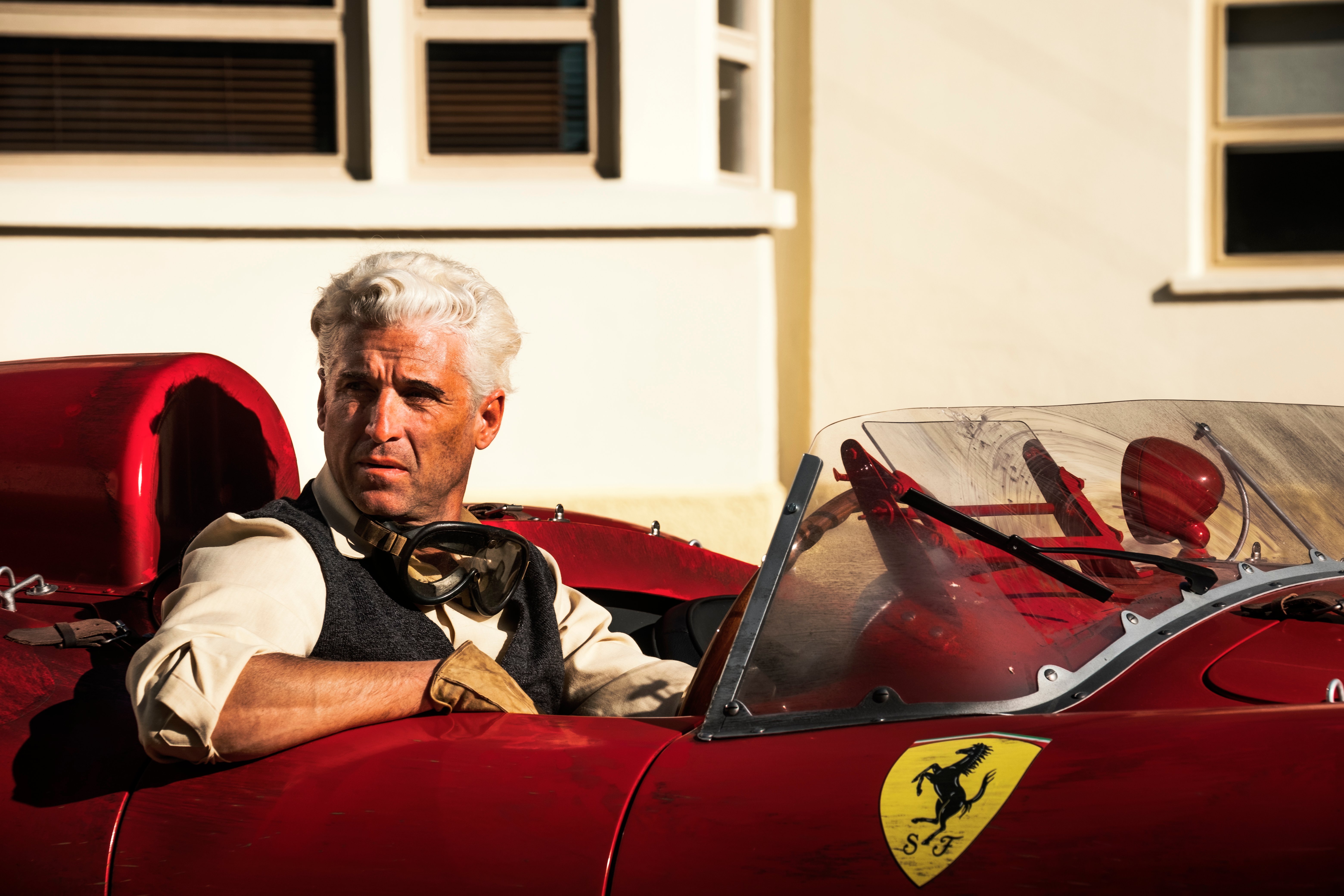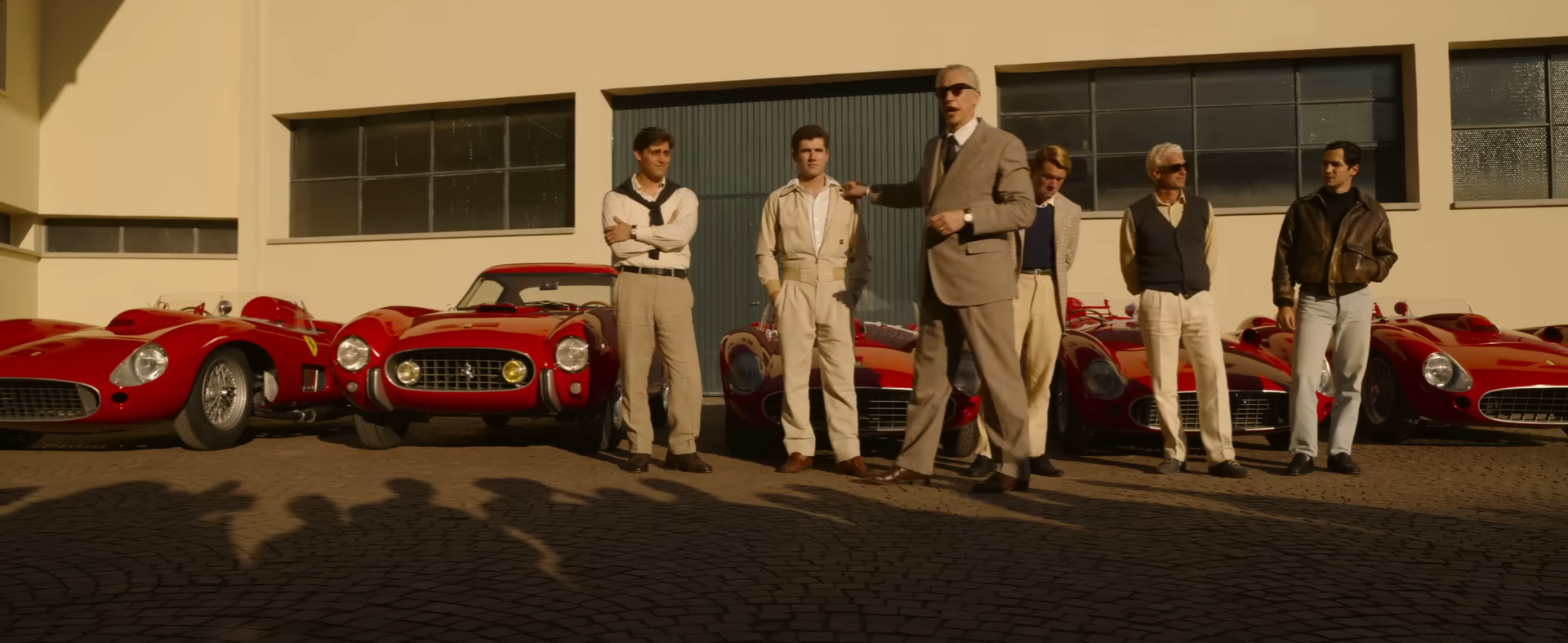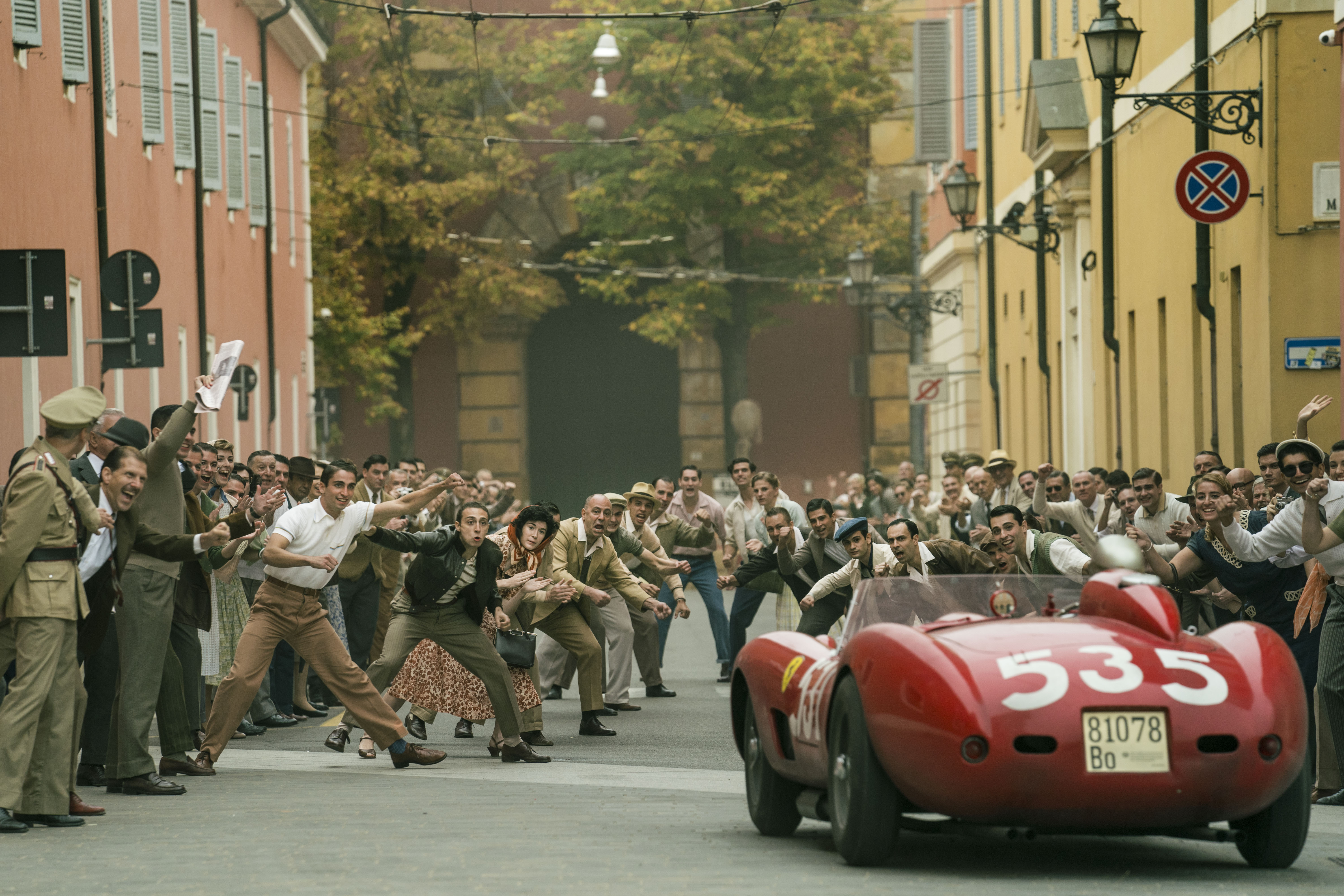Here’s How Much The Ferraris In ‘Ferrari’ Are Actually Worth
The Rosso Corsa Ferrari roadsters featured in the Adam Driver-led movie range in value from $2 million to $36 million.

Most Ferrari audiences will see Adam Driver’s Enzo Ferrari as the indisputable star of the high-octane, Michael Mann-directed period piece set in 1957—an especially pivotal year in the Prancing Horse brand’s history. But classic car enthusiasts and Ferraristi are liable to fawn most over the cavalcade of vintage Rosso Corsa roadsters portrayed, including the two models seen battling on the the 1000-mile Mille Miglia circuit stretching from Brescia to Rome.
Being some of the rarest Ferraris in the world, the vehicles are vastly more valuable than most great movie cars, like Dom’s 1970 Dodge Charger from the The Fast and the Furious or even the Lamborghini Countach from The Wolf of Wall Street, both of which were real examples of those models. That level of authenticity just wasn’t possible in Ferrari.
“Those kind of cars, you can’t just bring onto a film set and race them, because they’re priceless,” Neil Layton, the movie’s action vehicle supervisor-coordinator, told Car and Driver.
“And with the film being 1957, some of the vehicles, like the Ferrari 801, for example, don’t exist. So we had to replicate and copy every car to a very high level of detail, because Michael’s attention to detail is second to none. This was not my first period car film, but it is the first one that we’ve undertaken where we’ve had to copy race cars which don’t exist. So that was a huge challenge.”
Technically, Layton is wrong about one thing: The real cars of Ferrari—or the ones that do exist—do have quantifiable values that range from seven-to-nine figures, according to the the classic car insurance experts at Hagerty. In fact, the most valuable car depicted in the film, the Ferrari 315 Sport, is the second-most valuable Ferrari of all time, next to the $70 million 1963 Ferrari 250 GTO, which reigns as the world’s most expensive production car.
With descriptions and info from Hagerty, see how much each Ferrari Ferrari is worth below:
Lancia-Ferrari D50: $2,000,000
Although most of Lancia’s great racing moments were with sports or rally cars, the Italian firm had a brief but memorable go at Formula One racing in 1954-55. Designed by Vittorio Jano, the D50 was both clever and beautiful. A dual-overhead cam V-8 served as a stressed member of the tubular chassis for added rigidity, and a five-speed transaxle in the rear improved balance. The most unusual and recognizable feature were the fuel and oil tanks, mounted in pods nestled inside the wheelbase on either side of the driver.
Hagerty
The D50 debuted in late 1954 and started the 1955 pre-season with two victories, but the death of Lancia’s star driver Alberto Ascari when testing a Ferrari sports car, as well as mounting money troubles, led Lancia to offload its whole F1 project to Ferrari. The latter company, along with driver Juan Manuel Fangio, took modified versions of the D50 (now wearing a prancing horse) to the 1956 World Championship.
Of six cars completed in period, only two legitimate D50s are said to have survived. Both are in long-term collections/museums, but a recreation done to exacting standards from original plans and advertised with an FIA Historic Technical Passport sold nine years ago for €812,000 ($1,117,555 at the time).
Ferrari 250 GT TdF: $6,500,000

The Tour de France Automobile was a long-distance sports car race held on roads and race circuits throughout, you guessed it, France. It ran annually from 1951 to 1986, and for four years straight from 1956-59 the 3600-mile event was won by Ferrari’s dual-purpose road/race model – the 250 GT. Alfonso de Portago, the Spanish nobleman/race driver depicted in the film, delivered the first of these Tour de France wins for Ferrari. The company didn’t originally call this car the “Tour de France” or “TdF,” but it’s easy to see how the name stuck given the car’s dominance.
Hagerty
Ferrari built between 70 and 80 original 250 GT TdFs. Their prices can range widely depending on history, originality and bodywork, even down to how many vents are behind the side windows. But they do come to market regularly enough to calculate a reliable Price Guide value. They range from $5.7M for a #4 (Fair) condition car to $7.8 for a concours-ready #1 condition example, but exceptional ones have sold for more than that. That ex-Portago Tour de France winner, for example, sold for $13.2M in 2015.
Ferrari 500 TRC: $8,000,000
Widely considered to be the most beautiful of Ferrari’s Testa Rossa designs, 500 TRC is also notable for its engine. Or its engine’s missing cylinders, depending on how you look at it—what’s under that sculpted hood isn’t a wailing V-12 but a barking 2.0-liter four-cylinder.
Hagerty
Four-banger Ferraris like the 500 Mondial, 750/860 Monza and 500 TRC either raced in smaller displacement sports car categories or leveraged reliability to achieve overall wins. And while they lack the piston count of the 12-cylinder cars, they don’t lack one bit of the style. They took their fair share of checkered flags, too. Ferrari built just 19 500 TRCs, and sold most of them to customers. When it was a new, internationally-competitive race car, Ferrari sold 500 TRCs for about $11,000 (about $118,000 today). The last one seen at auction was in 2022, and it brought $7.815M.
Ferrari 335 Sport: $36,000,000

Because the 335 S and 315 S were the focus of Ferrari’s attack on the 1957 Mille Miglia, the main subject of the film, this car will likely see a large share of screen time. These Scaglietti-bodied V-12 sports cars were themselves evolutions of the 290 MM, which had given Ferrari victory in the 1956 running of the 1000-mile Italian race. The 315 S was the 3.8-liter version, with about 355 hp. The 335 S was the 4.0-liter version, with 390 hp.
Hagerty
For the 1957 World Sportscar Championship, both had stiff competition from the new 400-hp Maserati 450S as well as the Aston Martin DBR1 and Jaguar D-Type. For the Mille Miglia, however, early retirements among the Maseratis left Enzo Ferrari in a much more comfortable position. By the final hours of the race, his cars filled most of the top ten spots. Then, just miles from the finish, the left front tire blew on de Portago’s 335 S. He crashed, killing himself along with his navigator Edmund Nelson and nine spectators. Ferrari won the Mille Miglia and the 1957 championship, but it was a tough year for Il Commendatore. As a result of de Portago’s accident, the Mille Miglia would be no more, and the Italian authorities charged both Enzo and the tire manufacturer with manslaughter. The charges were eventually dismissed.
Another 335 S sold at auction in 2016 for €32.075M ($35.7M). At the time, it was the most expensive auction car ever sold in Europe.
Ferrari 315 Sport: $36,000,000

Ahead of the carnage following de Portago’s accident in the 335 S, the less powerful 315 S took the first two spots, with Piero Taruffi (played by Patrick Dempsey) followed by Wolfgang von Trips. It’s Taruffi’s car, number 535 and the winner of the last ever Mille Miglia, that appears on the poster for the film.
Hagerty
Ferrari built just three of these cars in period, and while there are records of 315s selling in the 1990s, that was a vastly different market than today’s. Given the lack of recent data, the closest comparable sale would be the $35.7M 335 S mentioned above.
